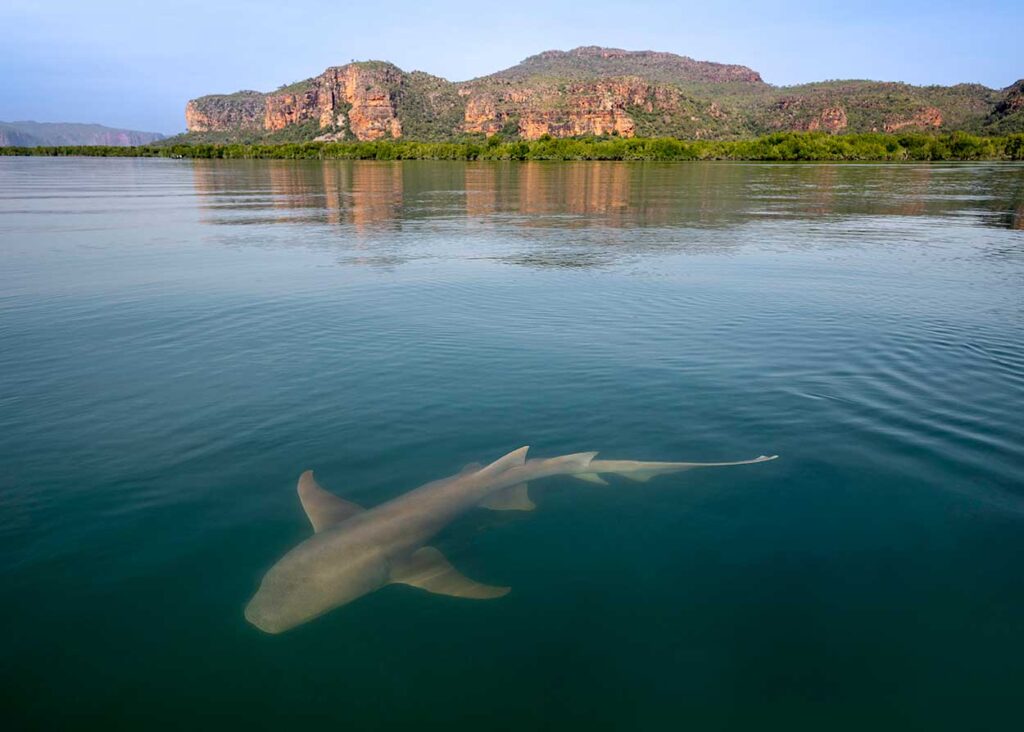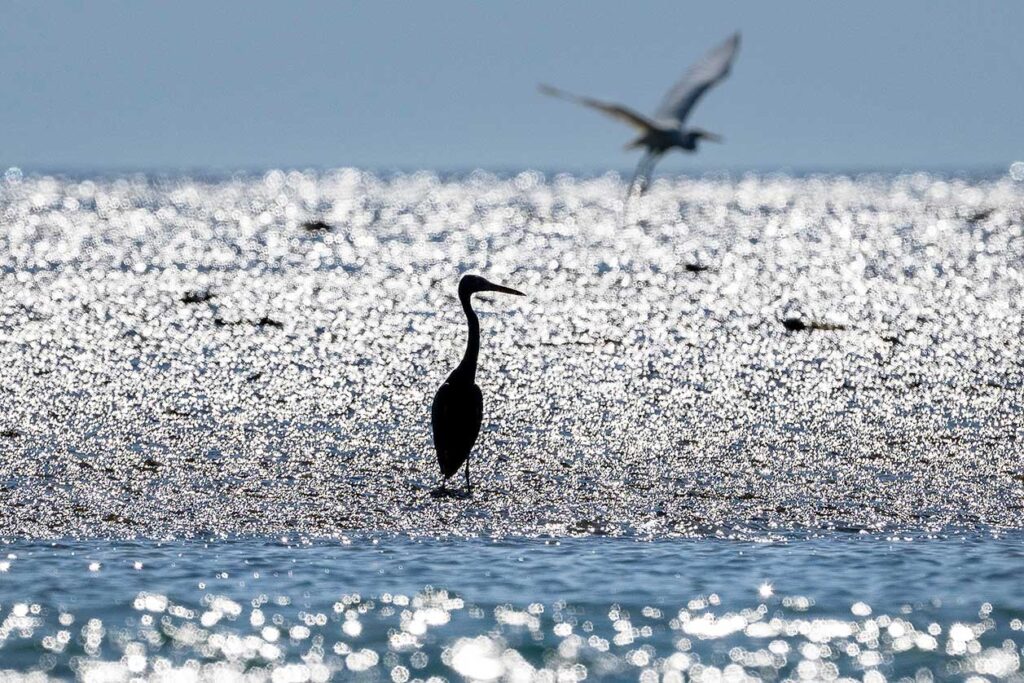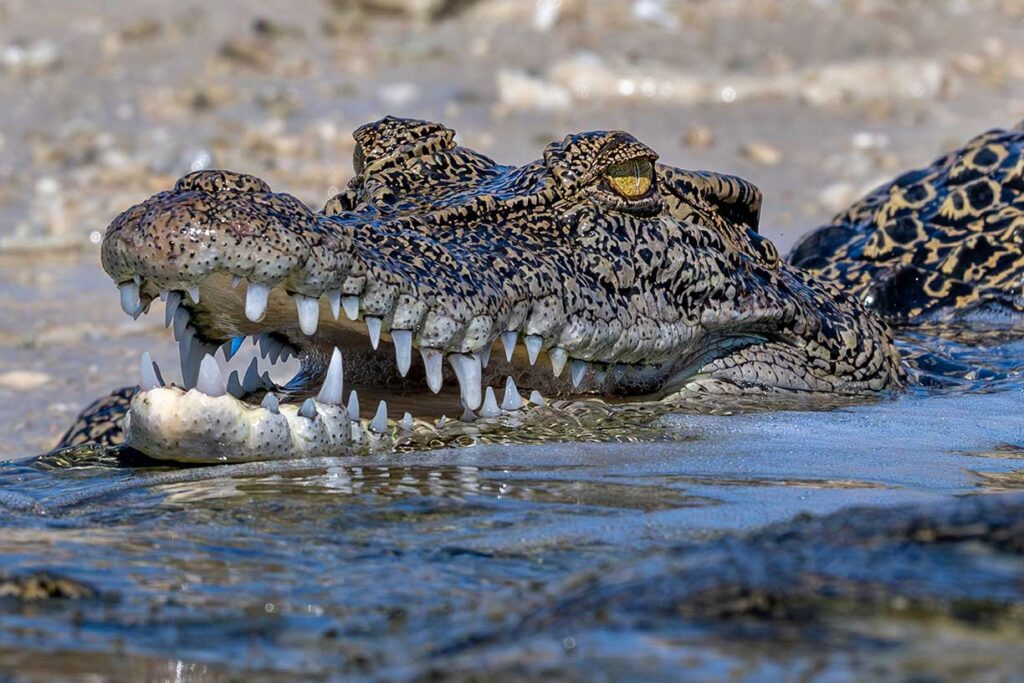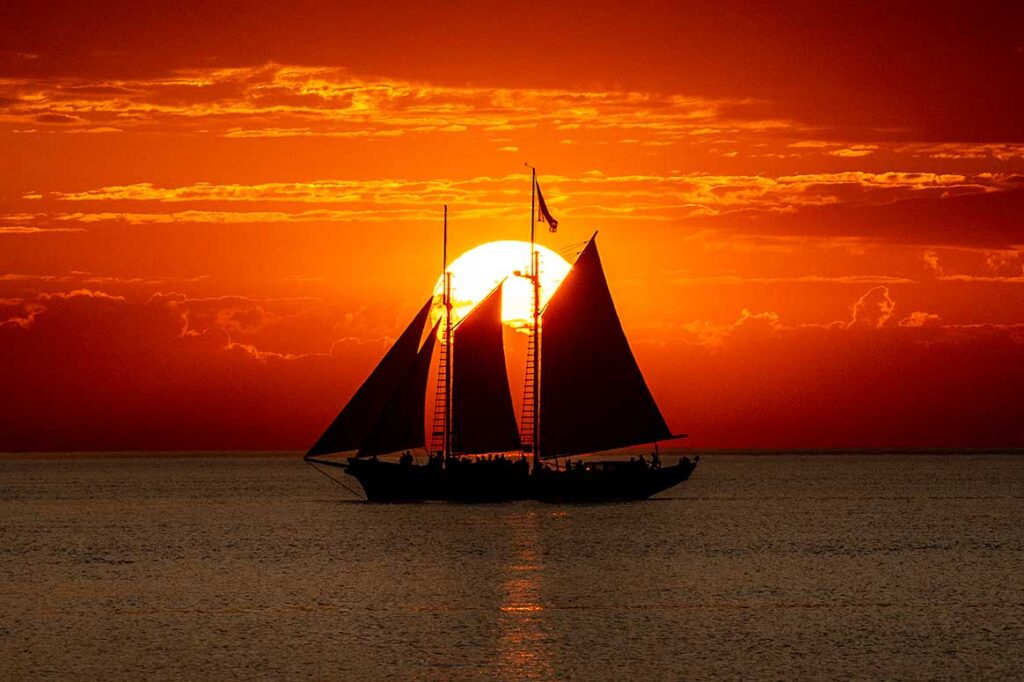Australia’s Last Frontier
By Mark Edward Harris
There are places on this planet that are off the beaten track, then there are others that are so removed that there are few, if any, tracks at all. The northwest coast of Australia, an area known as “The Kimberly,” is one of them.
I join an Abercrombie and Kent expedition cruise to explore this vast region from Broome in the state of Western Australia to Darwin in the continent’s Northern Territory.
In terms of equipment, since I’ll be working out of a floating luxury hotel, I can bring what I need for a particular expedition and leave other pieces in my cabin, for instance, my Nikkor Z 400mm f/2.8, when hiking to an aboriginal cave painting site.
I decided on the Think Tank Airport TakeOff V2.0 bag to be entrusted with my gear for the trip. I can roll it around airports and streets before we depart Broome, then convert it into a backpack for excursions into the outback. Inside are two Nikon Z9 camera bodies, Z 14-24mm f/2.8, Z 24-70mm f/2.8, Z 70-200mm f/2.8, and Z 400mm f/2.8 lenses, as well as an extra battery, Delkin Devices BLACK CFexpress cards, a Tiffen variable ND filter and polarizer.
A separately packed Stella CLx10 helps with illumination when needed, as does a Westcott 20-inch Silver/White reflector.
Depending on how much equipment I will take with me on a given assignment, I will also often turn to the slightly more demure ThinkTank StreetWalker rolling bag/backpack. Either way, when they’re in the rolling mode, I detach all my lenses to eliminate vibration between them and my camera bodies.
The Kimberley is bordered on the west by the Indian Ocean and the north by the Timor Sea, with much of its coastal areas only accessible by sea. Extreme tidal changes are evident on its dramatic cliffs.
Our first expedition sets the stage for the journey ahead. We dock off the Lacepedes and board Zodiacs to explore these four low-lying cays set atop a coral reef that are an important nesting site for green sea turtles and seabirds, including brown boobies, red-chested frigate birds, crested terns, and speckled ruddy turnstones. The Lacepede skies are filled with flapping wings and a cacophony of bird calls. Also on our itinerary is Ashmore Reef, a designated Marine Nature Reserve classified as an IBA (Important Bird Area). My extra reach with the built-in 1.4x teleconverter employed on my Nikkor Z 400mm f/2.8 is extremely useful when focusing on specific birds.
I turn to my Z 14-24mm f/2.8 and Z 24-70mm f/2.8 on geology-focused explorations of the Kimberly, including on a Zodiac excursion to and through Horizontal Falls, described by Sir David Attenborough as “one of the greatest natural wonders of the world.” Set within Talbot Bay, the horizontally flowing waterfalls are created when massive tidal currents squeeze through two narrow gorges.
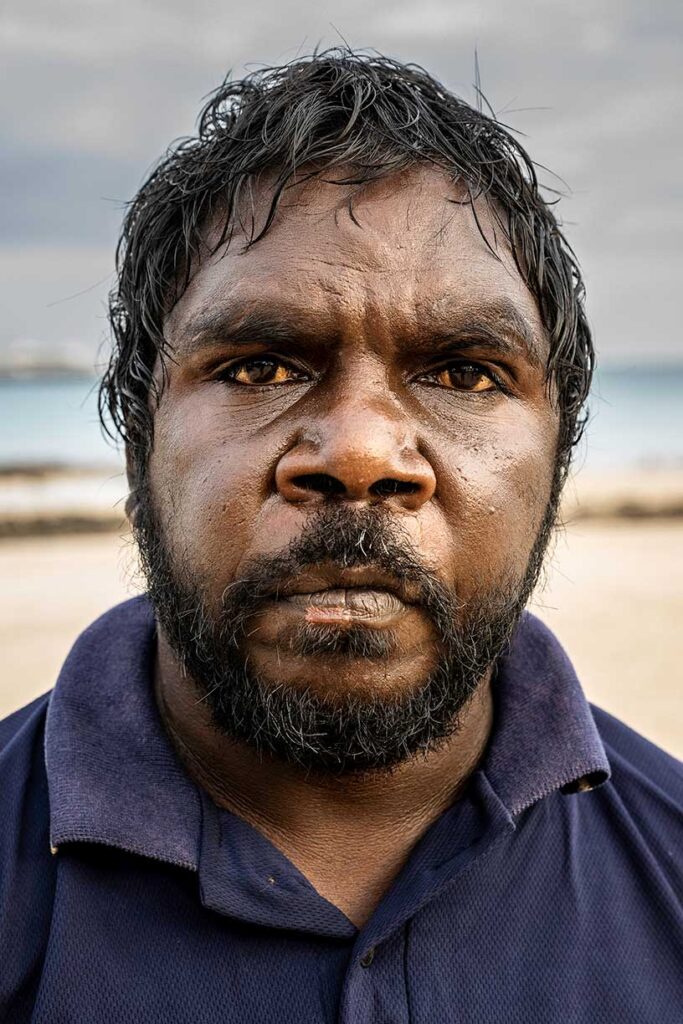
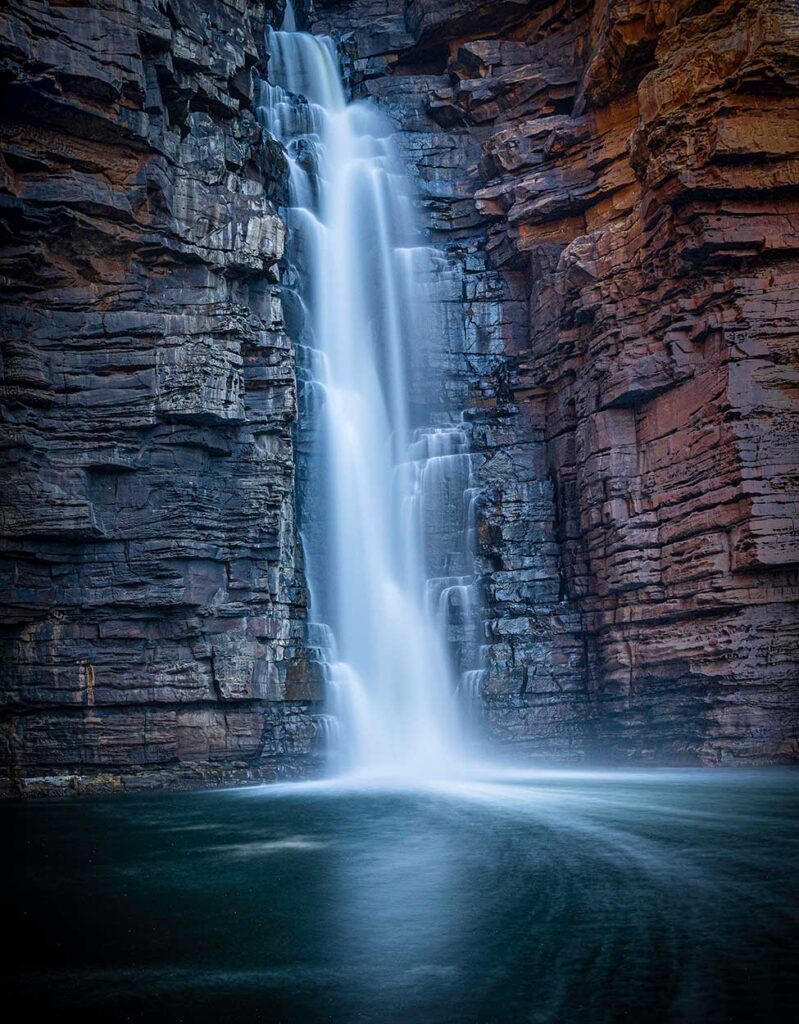
Right: King George Falls.
Mark Edward Harris © All rights reserved.
“A final day at sea to complete the 1270 nautical mile journey to Darwin is capped by a stunning sunset I record with the Nikkor Z 400mm with the built-in 1.4x teleconverter engaged and in the DX crop mode to give me in-camera even more outreach. It’s a magnificent way to complete an exploration of Australia’s last frontier. “
The diversity of The Kimberly reveals itself on a bushwalk from Freshwater Cove to a cave depicting indigenous rock art with local Australian Aborigines as site interpreters.
These ancient paintings of Wandjina figures reveal the myths and traditions of the Worrorra people.
Also on the itinerary is Bigge Island, sacred to the indigenous Wunambal people for more than 20,000 years. Caves on the island contain well-preserved Wandjina paintings, including a visual record of the European ingress into their ancient way of life. Another form of art, this one created geologically, is a spectacular array of sandstone pinnacles on Langgi Beach.
One of the most thrilling photographic highlights in the Kimberly is a doorless helicopter flight over the vast Mitchell Plateau to Mitchell Falls and, after landing, a hike to some spectacular overviews. The North Face FutureLight hiking boots were definitely something I was glad to have added to the packing list to navigate this rocky and unforgiving terrain.
Wyndham is the first location since Broome where we are able to dock the Le Laperouse rather than depart the ship by Zodiac. I board a small boat to explore the Ord River, one of the most stunning river systems in Australia. In addition to an array of flora and fauna, including freshwater crocodiles, hundreds of bird species here make this region a must for amateur twitchers and professional ornithologists.
A final day at sea to complete the 1270 nautical mile journey to Darwin is capped by a stunning sunset I record with the Nikkor Z 400mm with the built-in 1.4x teleconverter engaged and in the DX crop mode to give me in-camera even more outreach. It’s a magnificent way to complete an exploration of Australia’s last frontier.
Mark Edward Harris
Assignments have taken Los Angeles and Tokyo-based photographer Mark Edward Harris to more than 100 countries and all seven continents. His editorial work has appeared in publications such as Vanity Fair, LIFE, The New York Times, The Washington Post, Time Magazine, GEO, Newsweek, Conde Nast Traveler, National Geographic Traveler, AFAR, Wallpaper, Vogue, Architectural Digest, The Los Angeles Times Magazine, and The London Sunday Times Travel Magazine as well as all the major photography and in-flight magazines. Among his numerous accolades are CLIO, ACE, Impact DOCS Award of Excellence, Aurora Gold, and IPA awards. His books include Faces of the Twentieth Century: Master Photographers and Their Work, The Way of the Japanese Bath, Wanderlust, North Korea, South Korea, Inside Iran, The Travel Photo Essay: Describing
A Journey Through Images, and his latest, The People of the Forest, a book about orangutans.

